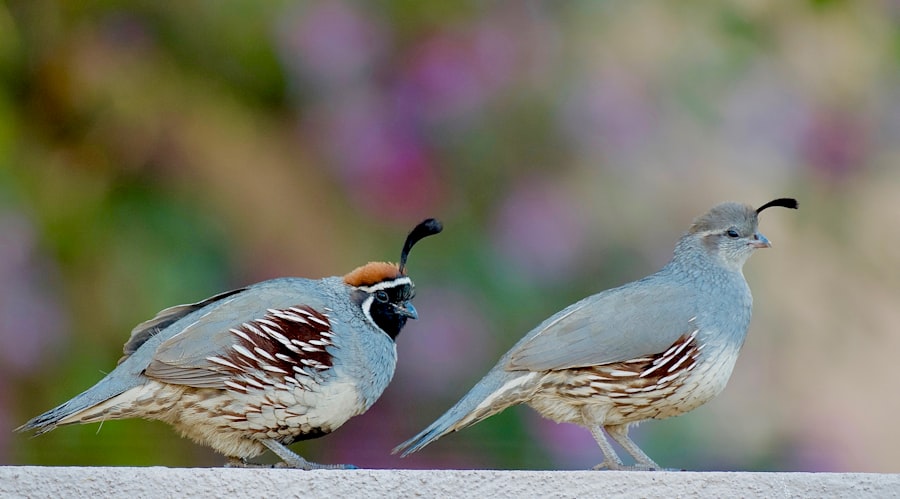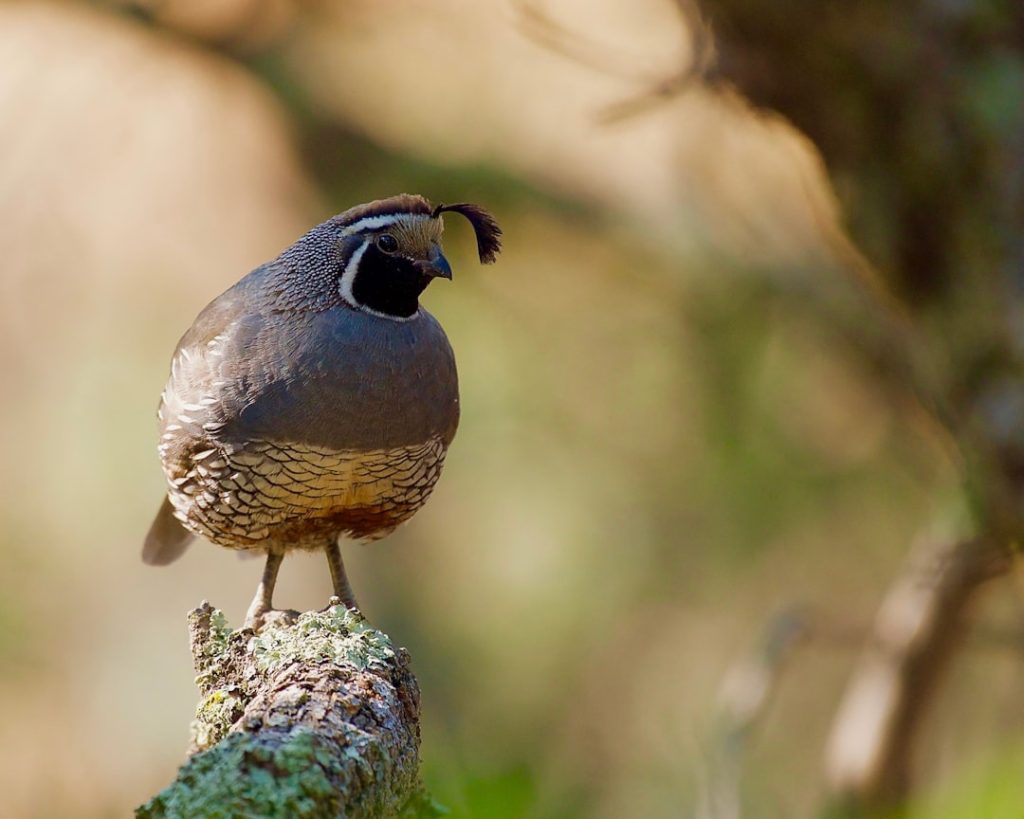Selective breeding is a process that has been used for centuries to improve the genetics of plants and animals. When it comes to quail, selective breeding is a method used to enhance specific traits in the birds, such as size, egg production, and temperament. By carefully choosing which quail to breed based on these desired traits, breeders can create a line of quail that consistently exhibit these characteristics. Selective breeding can be a powerful tool for improving the overall quality of quail stock, and it is an essential practice for anyone looking to raise quail for meat or eggs.
Quail are small game birds that are popular for their delicious meat and nutritious eggs. They are relatively easy to raise and can thrive in a variety of environments, making them an attractive option for small-scale farmers and homesteaders. Selective breeding can help to maximize the potential of quail for meat and egg production, as well as improve their overall health and resilience. By understanding the history, benefits, techniques, challenges, and best practices for selective breeding quail, breeders can work towards creating a sustainable and thriving quail population.
Table of Contents
Key Takeaways
- Selective breeding of quail involves intentionally choosing and mating quail with desirable traits to produce offspring with those traits.
- The history of selective breeding quail dates back to ancient times, with evidence of domestication and selective breeding practices in various cultures.
- The benefits of selective breeding quail include improved productivity, disease resistance, and overall quality of the quail stock.
- Selective breeding techniques for quail include pedigree selection, crossbreeding, and artificial insemination to achieve desired traits.
- Common challenges in selective breeding quail include genetic diversity, inbreeding, and maintaining desired traits over generations.
- Selecting the right quail for breeding involves evaluating traits such as size, egg production, and temperament to achieve breeding goals.
- The future of selective breeding quail involves continued research and innovation to further improve quail genetics and productivity.
The History of Selective Breeding Quail
The practice of selective breeding quail has been around for centuries, with early records of domesticated quail dating back to ancient China and Japan. These early breeders likely selected quail with desirable traits such as size, color, and temperament to create lines of birds that were better suited for human use. Over time, selective breeding techniques have evolved, allowing breeders to more precisely control the genetic makeup of their quail stock.
In more recent history, selective breeding has been used to develop specific breeds of quail for meat and egg production. For example, the Coturnix quail has been selectively bred to produce larger eggs and more meat, making it a popular choice for commercial quail farming. Additionally, selective breeding has been used to create quail with unique color patterns and markings, appealing to hobbyists and enthusiasts. The history of selective breeding quail is rich and diverse, with a long tradition of using this practice to improve the genetics of these small game birds.
The Benefits of Selective Breeding Quail
Selective breeding quail offers a wide range of benefits for both breeders and the birds themselves. By carefully choosing which quail to breed based on specific traits, breeders can create lines of birds that consistently exhibit these characteristics. This can lead to improved meat and egg production, as well as better overall health and resilience in the quail population. Additionally, selective breeding can help to preserve and enhance desirable traits in specific quail breeds, ensuring their continued success and popularity.
For breeders, selective breeding can also be a profitable endeavor. By producing high-quality quail with desirable traits, breeders can demand higher prices for their birds, whether for meat, eggs, or as pets. Selective breeding can also lead to a more efficient and sustainable quail population, reducing the need for external inputs such as medication or supplemental feed. Overall, the benefits of selective breeding quail are numerous and far-reaching, making it an essential practice for anyone looking to raise healthy and productive quail.
Selective Breeding Techniques for Quail
There are several techniques that breeders can use to selectively breed quail for specific traits. One common method is line breeding, where closely related birds are bred together to reinforce desirable traits within a specific line of quail. This can help to create a more uniform population of birds with consistent characteristics. Another technique is crossbreeding, where birds from different lines or breeds are bred together to introduce new genetic diversity and potentially create offspring with improved traits.
In addition to these traditional breeding methods, modern technologies such as DNA testing and genetic mapping can also be used to identify specific genes associated with desirable traits in quail. This allows breeders to make more informed decisions about which birds to breed together in order to achieve their desired outcomes. By combining traditional breeding techniques with modern genetic tools, breeders can more effectively control the genetic makeup of their quail stock and work towards creating a population of birds with superior traits.
Common Challenges in Selective Breeding Quail
While selective breeding can offer many benefits, it also comes with its own set of challenges. One common challenge is maintaining genetic diversity within the quail population. Over time, selective breeding can lead to a reduction in genetic variation, which can make the population more susceptible to diseases and other health issues. To combat this, breeders must carefully manage their breeding programs to ensure that genetic diversity is preserved while still selecting for desirable traits.
Another challenge in selective breeding quail is the potential for unintended consequences. When selecting for specific traits, breeders must be mindful of how these traits may interact with other aspects of the bird’s genetics. For example, selecting for larger size may inadvertently lead to decreased egg production or other health issues. It is important for breeders to take a holistic approach to selective breeding, considering how different traits may impact each other and the overall health of the quail population.
Selecting the Right Quail for Breeding

When it comes to selective breeding quail, choosing the right birds for breeding is crucial for success. Breeders should carefully evaluate each bird based on their desired traits, such as size, egg production, temperament, and overall health. It is important to select birds that exhibit these traits consistently and have a strong genetic background that will pass on these characteristics to their offspring.
In addition to physical traits, breeders should also consider the behavioral characteristics of their quail when selecting birds for breeding. Birds that are calm and docile may be easier to handle and manage in a breeding program, while aggressive or skittish birds may pose challenges. By carefully evaluating both physical and behavioral traits, breeders can ensure that they are selecting the right quail for their breeding program and working towards their desired outcomes.
The Future of Selective Breeding Quail
The future of selective breeding quail looks promising, with continued advancements in genetic technologies and breeding techniques. As our understanding of genetics improves, breeders will have more tools at their disposal for identifying and selecting for specific traits in quail. This will allow for more precise control over the genetic makeup of quail stock and the ability to create lines of birds with even more desirable characteristics.
Additionally, as consumer demand for sustainable and ethically raised food continues to grow, there will likely be increased interest in selectively bred quail that are well-suited for small-scale farming and homesteading. This presents an opportunity for breeders to develop lines of quail that are not only productive but also resilient and well-adapted to a variety of environments.
Overall, the future of selective breeding quail is bright, with potential for continued improvements in the genetics of these small game birds. By leveraging new technologies and techniques while also preserving genetic diversity and considering the holistic health of the population, breeders can work towards creating a sustainable and thriving population of selectively bred quail.
If you’re interested in learning more about selective breeding in quail, you might also want to check out this informative article on different types of chicken coops at PoultryWizard. Understanding the importance of providing a suitable environment for poultry can help you appreciate the impact of selective breeding on the overall health and productivity of quail.
FAQs
What is selective breeding in quail?
Selective breeding in quail is the process of intentionally choosing and mating quail with desirable traits in order to produce offspring with those same traits. This can include traits such as size, color, egg production, and temperament.
Why is selective breeding important in quail farming?
Selective breeding is important in quail farming because it allows farmers to improve the overall quality and productivity of their quail. By selectively breeding for specific traits, farmers can create quail that are better suited for their intended purpose, whether it be for meat production, egg laying, or as pets.
What are some common traits that quail breeders select for?
Common traits that quail breeders select for include size, color, egg production, temperament, and disease resistance. These traits can vary depending on the specific goals of the breeder, such as producing quail for meat, eggs, or exhibition.
How do quail breeders select which birds to breed?
Quail breeders select which birds to breed based on the traits they are looking to improve. They may use methods such as visual inspection, performance testing, and pedigree analysis to identify birds with the desired traits and then selectively breed them to produce offspring with those traits.
What are the potential benefits of selective breeding in quail?
The potential benefits of selective breeding in quail include improved productivity, better quality meat and eggs, increased disease resistance, and the ability to create quail with specific traits that are in demand in the market. Selective breeding can also help to preserve and improve specific quail breeds.
Meet Walter, the feathered-friend fanatic of Florida! Nestled in the sunshine state, Walter struts through life with his feathered companions, clucking his way to happiness. With a coop that’s fancier than a five-star hotel, he’s the Don Juan of the chicken world. When he’s not teaching his hens to do the cha-cha, you’ll find him in a heated debate with his prized rooster, Sir Clucks-a-Lot. Walter’s poultry passion is no yolk; he’s the sunny-side-up guy you never knew you needed in your flock of friends!







